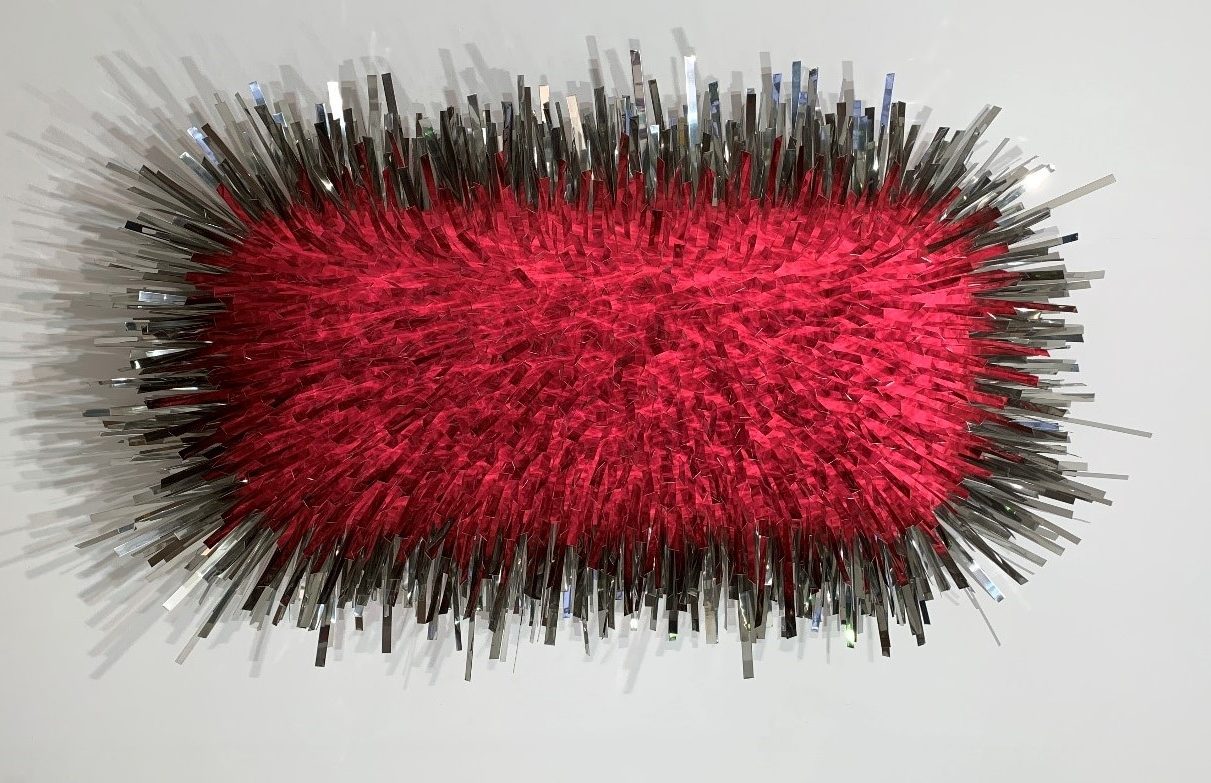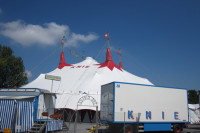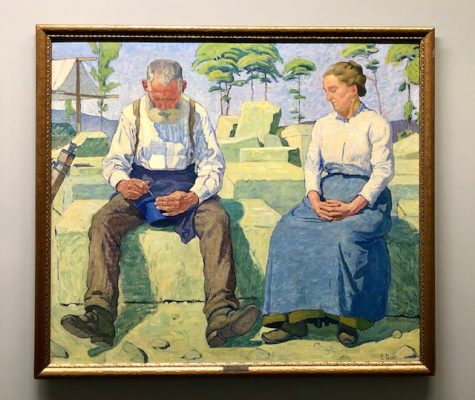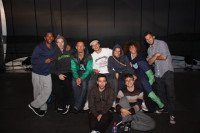Art
A retrospective kaleidoscope – 25th Contemporary Art Fair, Zürich

Painting Cornelia Lochmann – credits Farkas Orsolya
Cornelia Lochmann’s use of different painting techniques, enriched with an expressive touch give the impression of mural art. Her works are exquisite mixture between abstract and figurative painting.

Artwork Philipp Eyerich – credits Farkas Orsolya
Philipp Eyerich seems to be a descendent of Sisyphus. The process of creation is identical to an incredibly time-consuming, variable jigsaw puzzle, ruled by raw materials like concrete, aluminium, wood and steel. Although Sisyphus is cursed never to reach the top of the mountain, the artist is redeemed by amazing, radiant works of art, that express ultimate freedom.

Artwork Kathy Müller Moser – credits Farkas Orsolya
Kathy Müller-Moser (1968-2013) daughter of a Swiss and a Japanese woman leaves behind a legacy in which different cultural features blend harmoniously. Her unique sculptures reflect both vulnerability and rebellion in their loneliness and meditative posture. The mosaic-like mirror plates are an unmistakable feature of her sculptures.

Kathy Müller Moser – credits Farkas Orsolya
Her paintings are reflective inner journeys, swinging between innocence and adulthood.

Sculptures Matteo Pugliese – credits Farkas Orsoya
With his athletic bronze sculptures, breaking through the walls, arising out of concrete, Matteo Pugliese , seems to be a modern reincarnation of Michelangelo. The contorted body configurations are all the more intriguing as our imagination is constantly challenged by means of the fragmented sculptures. It is the viewer who has to make up for the missing body parts. Pugliese brilliantly engages the viewer, constantly challenging his senses. We sometimes seem to be wondering whether it is the athletic male body fragments that are coming to life transcending the concrete or they are engulfed , submerging into the white walls.

Sculpture Matteo Pugliese – credits Farkas Orsolya
Maxim Wakultschik’s works redefine the techniques of painting, transcending the classical boundaries. Instead of the flat pictures his unique portraits are three-dimensional works, constructed by means of wood, metal, toothpickers , paper or plexiglass. A variety of different techniques resulting in three-dimensional portraits that seem to be in motion. A true testimony for the endless freedom of creativity.

Painting Maxim Wakultschik – Credits Farkas Orsolya





